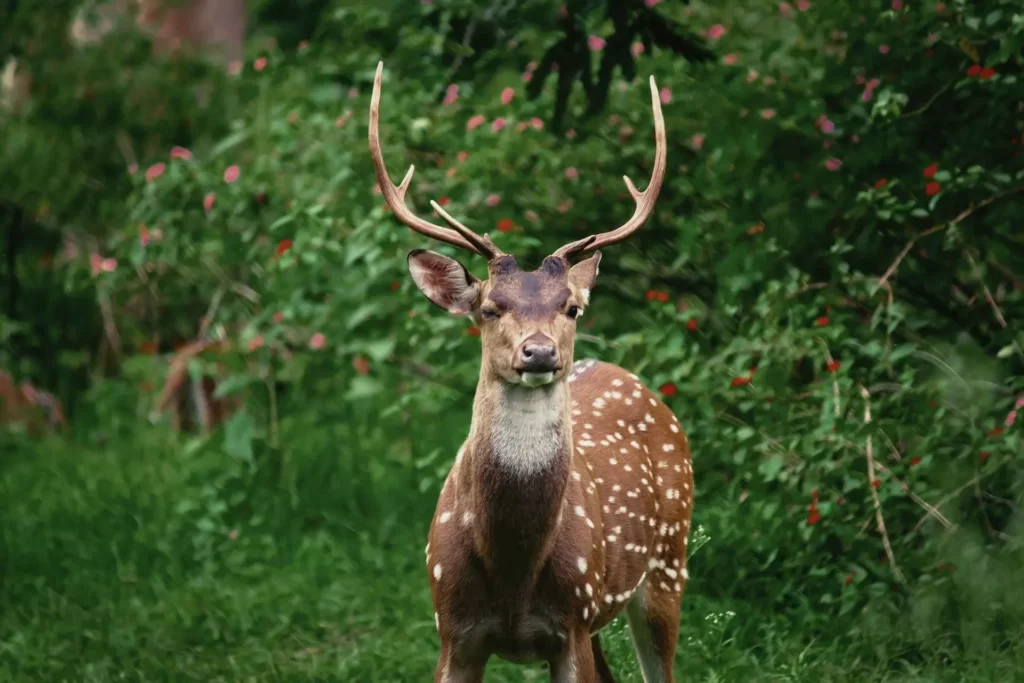
Have you at any point contemplated whether deer, those smooth animals of the woodland, eat on begonias? On the off chance that you’re a planting fan or somebody who appreciates noticing untamed life, this question could have entered your thoughts. In this article, we will investigate the inquisitive connection among deer and begonias, revealing insight into the dietary propensities for these creatures and offering tips on the most proficient method to shield your nursery from potential deer chomping. Thus, how about we jump into this remarkable and charming subject in straightforward English.
Table of Contents
The Silent Garden Visitors
Deer, known for their delicate and slippery nature, are a typical sight in many regions of the planet. These herbivores have a broad sense of taste, getting a charge out of different plants, bushes, and trees as a feature of their eating regimen. Notwithstanding, do begonias take care of business for a deer’s menu?
The Begonia: A Garden Gem
Begonias are valued for their staggering, dynamic blossoms and lavish foliage. These flexible plants can flourish in nurseries, compartments, or hanging containers, making them a #1 among grounds-keepers. They come in various assortments, including wax begonias, tuberous begonias, and rex begonias, each with its remarkable appeal.
The Begonia’s Flavors and Scents
One of the elements that make begonias so interesting to people is their exquisite scents and striking tones. Their delicious, delicious leaves and stems contain a sap that can be a wellspring of fascination for inquisitive natural life, including deer. It’s the taste, fragrance, and surface of these plants that can cause deer to think about them as a likely tidbit.
Deer’s Dietary Preferences
Deer are basically herbivores, and that implies their eating regimen essentially comprises of plants. They’ll crunch on leaves, grass, twigs, and youthful shoots. Their inclinations might fluctuate relying upon the season and accessibility of food. For instance, during the hotter months, deer could touch on new vegetation and plants. In the colder time of year, they might turn to woody plants and bushes when other food sources are scant.
The Ethical Consideration
While safeguarding your nursery is fundamental, taking into account the moral part of your actions is likewise significant. Deer, similar to all animals, are a necessary piece of the environment. Whenever the situation allows, it’s ideal to coincide calmly with these delightful creatures while tracking down ways of defending your nursery.
What Makes Begonias Deer Resistant?
Not all begonias are similarly interesting to deer. Some begonia assortments have qualities that make them less appealing to these nursery guests. Deer opposition in begonias can be credited to a blend of elements, including taste, fragrance, and harmfulness.
- Taste: Deer will quite often keep away from plants with major areas of strength for a, taste. Some begonia species normally produce intensifies that make a taste unappealing to these herbivores.
- Aroma: As referenced prior, begonias come in different fragrances. Some have a gentle, wonderful smell, while others radiate scents that can dissuade deer from benefiting from them.
- Poisonousness: Certain begonia species are harmful to creatures. This poisonousness can go about as an obstruction to deer. At the point when they taste or ingest harmful substances, they might stay away from these plants from here on out.
Begonia Types That Deer Eat
Not all begonias are protected from deer eating. While deer may by and large stay away from begonias because of their taste and aroma, a few animal groups and assortments are more powerless against their snacking inclinations. The following are a couple of begonia types that deer might view as tasteful:
- Tuberous Begonias (Begonia × tuberhybrida): These begonias have delicious stems and beautiful, pendulous blossoms. While their waxy surface areas of strength for and may deflect deer, they are not altogether deer-verification.
- Wax Begonias (Begonia semperflorens): Wax begonias are known for their waxy leaves and splendid, bunched blossoms. Deer may sometimes nibble on these, particularly assuming that other food sources are scant.
- Rieger Begonias (Begonia × hiemalis): Rieger begonias are valued for their energetic blossoms and polished leaves. However they are not deer’s best option, they can in any case be on the menu assuming deer are sufficiently eager.
Begonia Varieties That Deer Don’t Like
On the splendid side, there are begonia assortments that deer will quite often stay away from because of their taste, fragrance, or poisonousness. If you have any desire to protect your begonias from deer, think about establishing these deer-safe assortments:
- Dragon Wing Begonias (Begonia ‘Dragon Wing’): These begonias have huge, appealing, and winged serpent like wing-formed leaves. Their taste and aroma will more often than not deter deer from snacking.
- Angel Wing Begonias (Begonia coccinea): Holy messenger wing begonias are portrayed by their striking wing-formed leaves and bunches of brilliant roses. Their solid fragrance can prevent deer.
- Iron Cross Begonias (Begonia masoniana): Iron cross begonias are named for the unmistakable iron cross example on their leaves. These begonias are not ordinarily on deer’s menu because of their severe taste.
Protecting Your Begonias
Assuming you live in a space where deer are normal and you need to save your begonias, here are a few successful techniques for safeguarding your valuable blossoms:
- Fencing: Introduce a solid wall around your nursery to make an actual boundary that keeps deer out. Ensure the wall is adequately tall to deflect them from hopping over.
- Deer-Resistant Plants: Encompass your begonias with different plants that deer view as unappetizing. This can make a support zone that dissuades them from entering your begonia fix.
- Repellents: Apply deer anti-agents or impediments to your begonias. These items frequently have smells that deer see as horrendous, making them less inclined to move toward your plants.
- Motion-Activated Sprinklers: Introduce movement actuated sprinklers that turn on when they distinguish development. The unexpected shower of water can alarm deer and deter them from moving toward your nursery.
- Netting: Cover your begonias with deer mesh or lattice during the periods when deer are generally dynamic. This actual boundary can safeguard your plants without hurting the deer.
Conclusion
In the charming universe of nurseries, begonias stand as an image of excellence and style. In any case, when deer choose to visit, the tranquil conjunction can at times be disturbed. Deer are specific in their plant inclinations, and begonias are not completely protected from their hungers. While some begonia assortments might entice deer with their taste and aroma, others have attributes that stop these delicate nursery guests.
Understanding the interchange among begonias and deer is fundamental for landscapers who need to safeguard their valuable blossoms. By picking the right begonia assortments, utilizing defensive estimates like fencing and anti-agents, and establishing a climate that causes deer to feel unwanted, you can partake in the magnificence of begonias without the feeling of dread toward them turning into a deer’s magnificent bite. Eventually, with a touch of information and a few very much positioned protections, you can enjoy the quality of begonias in your nursery without the danger of them turning into a deer’s dinner.




